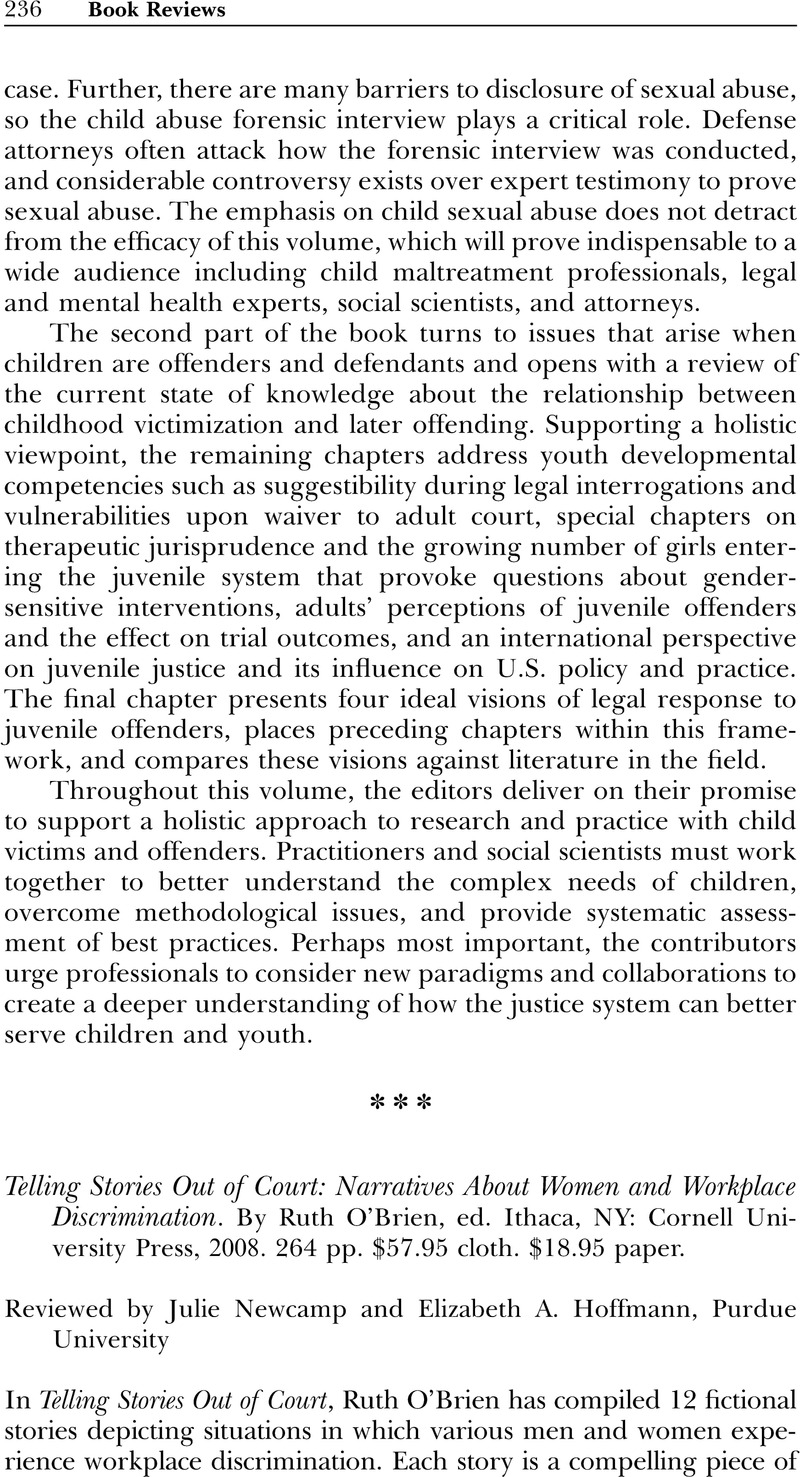No CrossRef data available.
Article contents
Telling Stories Out of Court: Narratives About Women and Workplace Discrimination. By Ruth O'Brien, ed. Ithaca, NY: Cornell University Press, 2008. 264 pp. $57.95 cloth. $18.95 paper.
Review products
Published online by Cambridge University Press: 01 January 2024
Abstract

- Type
- Book Reviews
- Information
- Copyright
- © 2011 Law and Society Association.


